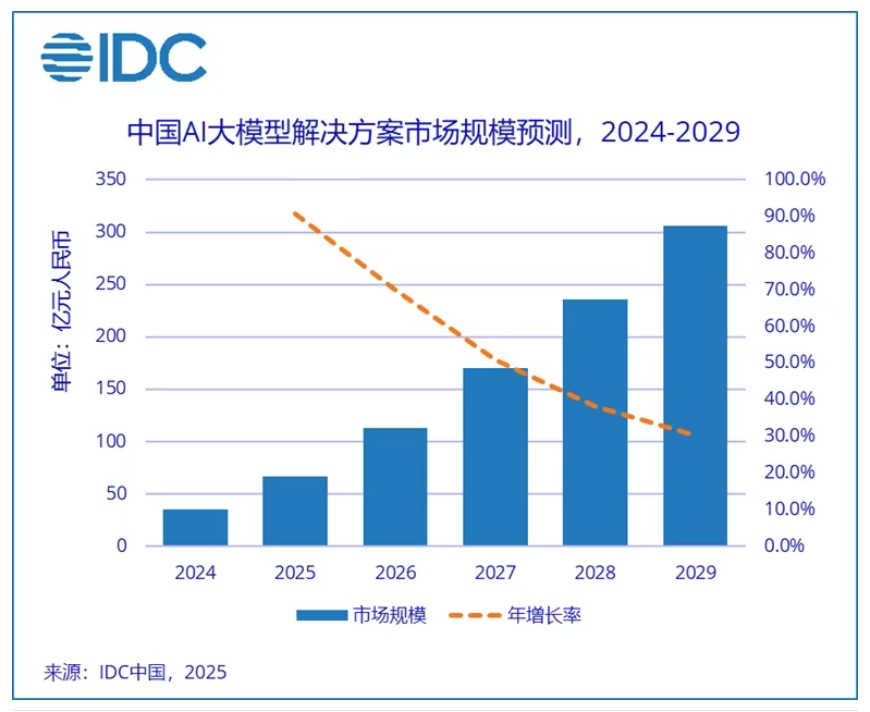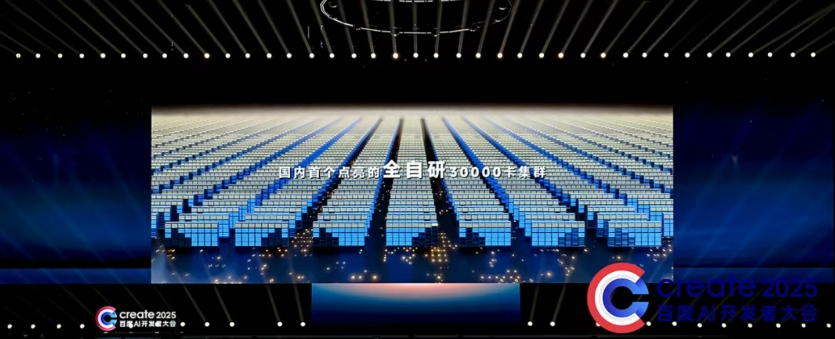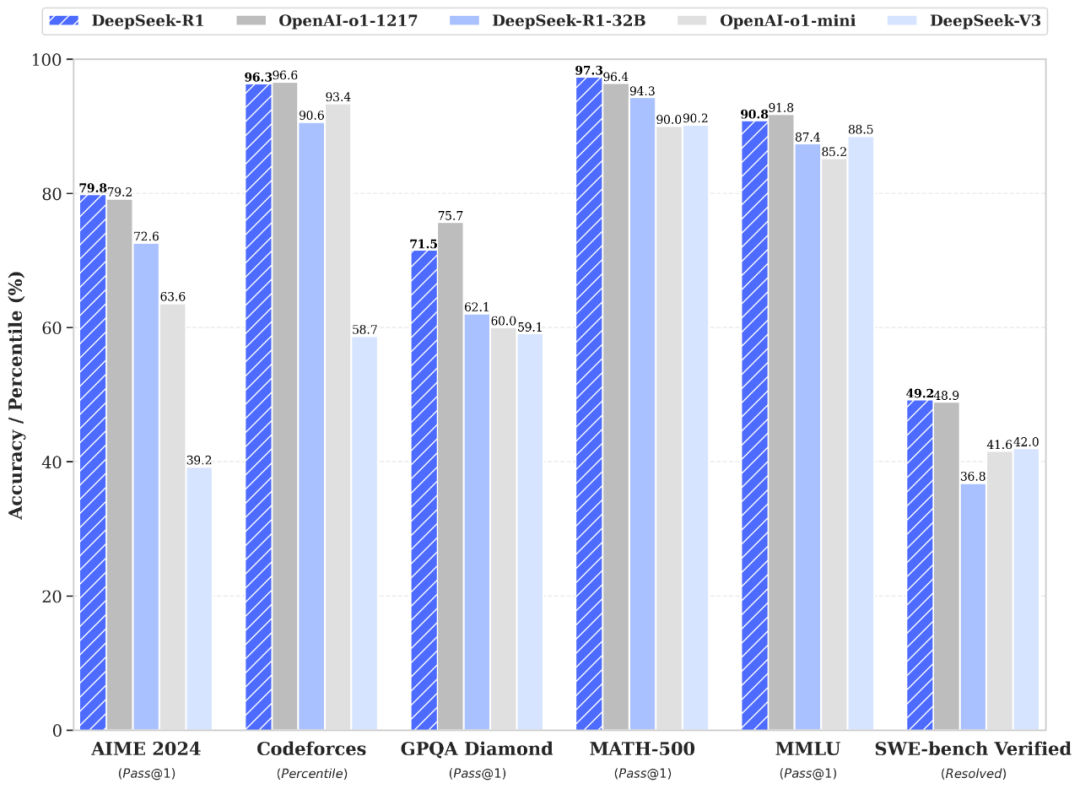From "Brick Making" to "Home Building": Redefining AI Large Models
![]() 05/15 2025
05/15 2025
![]() 707
707

Author | Lin Feixue
Editor | Hu Zhanjia
Operations | Chen Jiahui
Produced by | LingTai LT (ID: LingTai_LT)
Featured Image | Publicly available image on the internet
The AI transformation wave in 2025 is no longer about creating the most powerful "bricks" but about who can construct a comfortable "home" for users to inhabit.
A few months ago, DeepSeek threw a "brick" with a design cost of less than $6 million, rousing the entire industry. It turns out that constructing a home doesn't necessarily require the most expensive bricks; what's crucial is having a complete construction team, assembly line, blueprints, and delivery system.
Simultaneously, Wenxin Assistant, Quark, Doubao, Yuanbao, and others have begun to permeate our lives, from search to writing, from question-and-answer to editing, with model capabilities genuinely entering the "user community."
Today's competition isn't about who can afford to burn the most bricks of AI large models but about who can build a house with those bricks, install water, electricity, and WiFi, allowing users to move in and live comfortably.

Major Tech Firms Transition from "Stacking Bricks" to "Fixing Water Pipes"
In recent years, AI discussions have centered around a few keywords: large models, computing power, research papers, and the number of parameters. However, using a daily life scenario to describe it, major tech firms in the past were akin to "stacking bricks." Whoever stacked the highest, had the most parameters, or published the most research papers was deemed the strongest. But today, the rules of the game have shifted.
Now, it's not about who has more bricks but who can lay water pipes quickly and stably. This requires not just technology but a comprehensive connection of the "supply system" from the bottom to the surface, from algorithms to organizations.
According to public data from Tianyancha and the latest research report by International Data Corporation (IDC), China's Model as a Service (MaaS) market will rapidly expand at a compound annual growth rate of 66.1% from 2024 to 2029, with a market size expected to reach RMB 9 billion by 2029. The AI large model solutions market is also maintaining a high growth trend, with an overall scale anticipated to reach RMB 30.6 billion by 2029.

As major tech firms integrate their AI Labs into business departments, this transformation can be described as a shift from the "laboratory era" to the "engineering platform era."
This transformation directly addresses three practical issues: first, can models be trained quickly? Second, can they be deployed cost-effectively after training? Third, is the user experience good? These questions determine whether AI can truly become a company's "production tool" rather than an "exhibit."
Against this backdrop, AI is becoming the "underlying utility infrastructure" of enterprises. Like databases, search engines, and recommendation systems, it's embedded into specific products, becoming an invisible yet indispensable capability.
Today's Wenxin Assistant can help you write PPTs, summary reports, and polish copywriting;
Quark is no longer just a search tool but an AI companion that can solve problems, write, and organize materials;
The AI features in Jianying can automatically recognize speech, generate subtitles, and even edit videos... These are all outcomes of the completion of AI's "water, electricity, and pipeline networks."
Therefore, this round of transformation by major tech firms is ostensibly a change in organizational structure but essentially a reconstruction of thinking. It shifts from a research-oriented approach centered on "technology-based thinking" to a systems thinking approach focused on "service efficiency."
In the past, models were created first, and then uses were found. Now, needs are identified first, and then models are built. In the past, the goal was to create a powerful AI, but now, the goal is to enable every business to leverage AI.
This transformation may not be as flashy or lack groundbreaking breakthroughs, but it determines who will advance further in the coming years. After all, in the marathon of AI, stability is more important than speed. What truly wins over users are those major tech firms that can turn AI into an "everyday item without realizing it."

The Four Powers Realign: Who Can Build AI's "New Home"
If the AI competition three years ago was like a race to see who could build a rocket, the rules have already changed.
Now, everyone is competing to build a down-to-earth AI "new home."
And this AI home needs to be built from the foundation of the model, to the framework of computing power, to the bricks and tiles of scenarios, with water and electricity connected, before it can be inhabited.
According to public information from Tianyancha, Baidu, Alibaba, Tencent, and ByteDance, these four "general contractors," are now realigning their forces and showcasing their respective capabilities.
In the past, when people mentioned large models, they thought of hundreds of billions of parameters, months-long training periods, and burning money like water. It was akin to whoever could afford to hire dozens of bulldozers to dig hundreds of meters deep at once having a greater chance of winning.
But DeepSeek changed the game right from the start, creating a competitive model with fewer devices and a lower budget, and even open-sourcing it so anyone can use it.
As a result, Baidu introduced Wenxin 4.5 Turbo, focusing on "cost-effectiveness" and "efficiency"; Alibaba launched Qwen3, claiming that "activating a small number of parameters can handle heavy tasks"; and Tencent's Hunyuan follows the "multi-modal + multi-scenario" approach, connecting image, speech, and text channels.
It turns out that when it comes to building foundations, it's no longer about how thick they are but how skillfully, economically, and stably they are laid.
Next comes "building the framework" to consolidate the computing power infrastructure.
If models are bricks, then computing power is the worker who moves them. In the past, running a model for a project might require thousands of high-end chips, like hiring an international expert team for every task.
But now, Baidu has introduced Kunlun cores and developed its own 10,000-card and 30,000-card clusters, achieving efficiency comparable to assembly lines;

▲Image source: Baidu official
Alibaba is investing RMB 380 billion to build "AI infrastructure," covering everything from cloud computing to basic hardware;
Tencent combines and schedules its algorithms, data, and training teams, like a modern construction site with unified "people, vehicles, and materials";
Although ByteDance doesn't manufacture its own chips, it integrates upstream and downstream resources through the Seed platform, like hiring a "general contractor" to connect model training, content scenarios, and streaming platforms.
The final step is "interior decoration," where the competition is to make users feel comfortable living there.
According to comprehensive media information from Tianyancha, Baidu has integrated the Wenxin model into search, libraries, and cloud storage, creating a seamless connection for knowledge and office work;
Alibaba's approach is to use Qwen3 as the engine, with Quark as the front-end, and new features being launched on DingTalk, Taobao, etc.;
Tencent's Hunyuan is integrated into the WeChat ecosystem, covering everything from mini-programs to chat assistants;
ByteDance's Doubao relies on Douyin's streaming to gain popularity, and Jianying has added AI editing features, aiming to capture the "traffic entrance" in the content sector.
In simple terms, it's about who can transform AI from a laboratory robot into a smart home manager. It's not just about having a powerful model; it's about who can simplify the front-end experience based on the "complex operations" behind it.
Therefore, this current realignment of the four powers is no longer about whose research is better in the old era but about whose house is more livable in the new era. On the surface, AI remains a technical endeavor, but it's more like an industrial collaboration battle. Whoever can stabilize the foundation, build the framework, handle the decoration, and continuously maintain it is likely to become a truly first-rate "developer" in the AI era.

Deep-Water Struggle: The "Tripartite Warfare" of Large Models
If AI competition is a home-building contest, then the current game is no longer just about building the home itself but more like a multi-line battle among building material suppliers, construction teams, and property management companies, playing out a "community war."
These three types of players correspond to the three roles in the current large model industry: model factories, platform factories, and application factories.
They are like those who "make bricks," "rent land," and "finally sell houses and collect rent," each with their own logic and ambitions. But now, they are all intertwined, cooperating and competing simultaneously, creating a complex situation reminiscent of the "three-body" world in science fiction novels.
The first category is the "brick factory" that makes models. Represented by DeepSeek, they create "the most powerful bricks." Their main focus is efficiency, pushing model performance to the extreme with the least amount of money and equipment. It's like using a few old mixers to produce a batch of bricks that can withstand a magnitude 9 earthquake. Anyone who sees them would say, "These bricks are amazing."

▲Image source: DeepSeek official WeChat account
The second category is the "development zone operator," also known as platform factories, represented by Baidu Intelligent Cloud, Alibaba Cloud, and Tencent Cloud. These players have land, roads, water, and electricity, i.e., computing power resources, scheduling systems, and development platforms. They are the core channels that allow models to truly "run" and "live in."
To give a simple example, if you are a developer and use Baidu's model service, you can not only build applications on the Qianfan platform but also use its API, MCP, and scheduling system to deploy them into various products with one click, as simple as writing code. Alibaba, Tencent, and ByteDance are also developing similar tools to help developers "build homes in one go," from model invocation to data feedback to product launch.
The third category is the one closest to users, the "real estate agents + property management companies," also known as application factories. Most of the AI assistants, writing tools, search services, and editing software you see come from this category.
Products like Baidu's Wenxin Assistant, ByteDance's Doubao, Alibaba's Quark, and Tencent's Hunyuan Assistant have entered various aspects of users' lives.
As a result, you can see that for a model to be truly used by users, it must go through the entire route of "brick factory, platform, application." It may seem like three roles, but in reality, they are all tied to one chain, influencing, restricting, and hindering each other.
But it's not that simple. The identities of these three types of players can easily "cross over."
DeepSeek is a model factory, but it's also doing platform deployment and even starting to try combining with industries; ByteDance originally focused on applications, but now its Seed model system is becoming deeper and deeper;
Baidu was originally a platform player, but with the Wenxin model integrated with search and cloud storage, it's already walking a closed application loop; Alibaba is integrated with "self-research + self-use," connecting the entire supply chain from chips to cloud to front-end.
According to comprehensive media information from Tianyancha, this "deep-water struggle" is no longer about single-point outbreaks but about systematic synergy. It's about which company can connect the five links of model training, computing power scheduling, product integration, user experience, and data feedback into a closed loop, not just running through it but running smoothly and stably.
The major tech firms that can achieve this step are the "system players" of the new era. They can not only create tools but also build water pipes, lay electrical wires, handle decorations, and finally collect rent and maintain them.
The competition among major tech firms is no longer about who has the strongest model but whose house is more livable. As large models have evolved to this point, they have entered the middle game of truly testing organizational capabilities, engineering capabilities, and implementation capabilities.

Postscript
Building a home isn't just about comparing bricks; it's also about who has blueprints, construction teams, can deliver on time, and ensure that the home doesn't leak, has heating, and full signal strength.
The real challenge of this AI wave has nothing to do with whether good models can be created in the laboratory but whether major tech firms have the ability to make models run, connect, and provide a smooth user experience.
Baidu, Alibaba, Tencent, and ByteDance are no longer operating isolated "brick factories" (AI Labs) but rather collaboratively managing construction sites. They are establishing robust engineering systems, seamlessly embedding AI models into products, creating diverse application scenarios, and ultimately transforming these into tangible services. AI large models are transitioning from esoteric black technology to everyday commodities.
The future leaders in the tech industry will not be those who excel at merely "making bricks" but rather those who possess the expertise to "build houses." This metaphor signifies the shift from merely developing AI components to creating comprehensive, user-centric AI solutions.
Those who can successfully transform AI from raw materials into integrated systems, from isolated functions into cohesive experiences, and from research and development into reliable supply chains will emerge victorious in this restructuring battle of AI supply-side reform.





